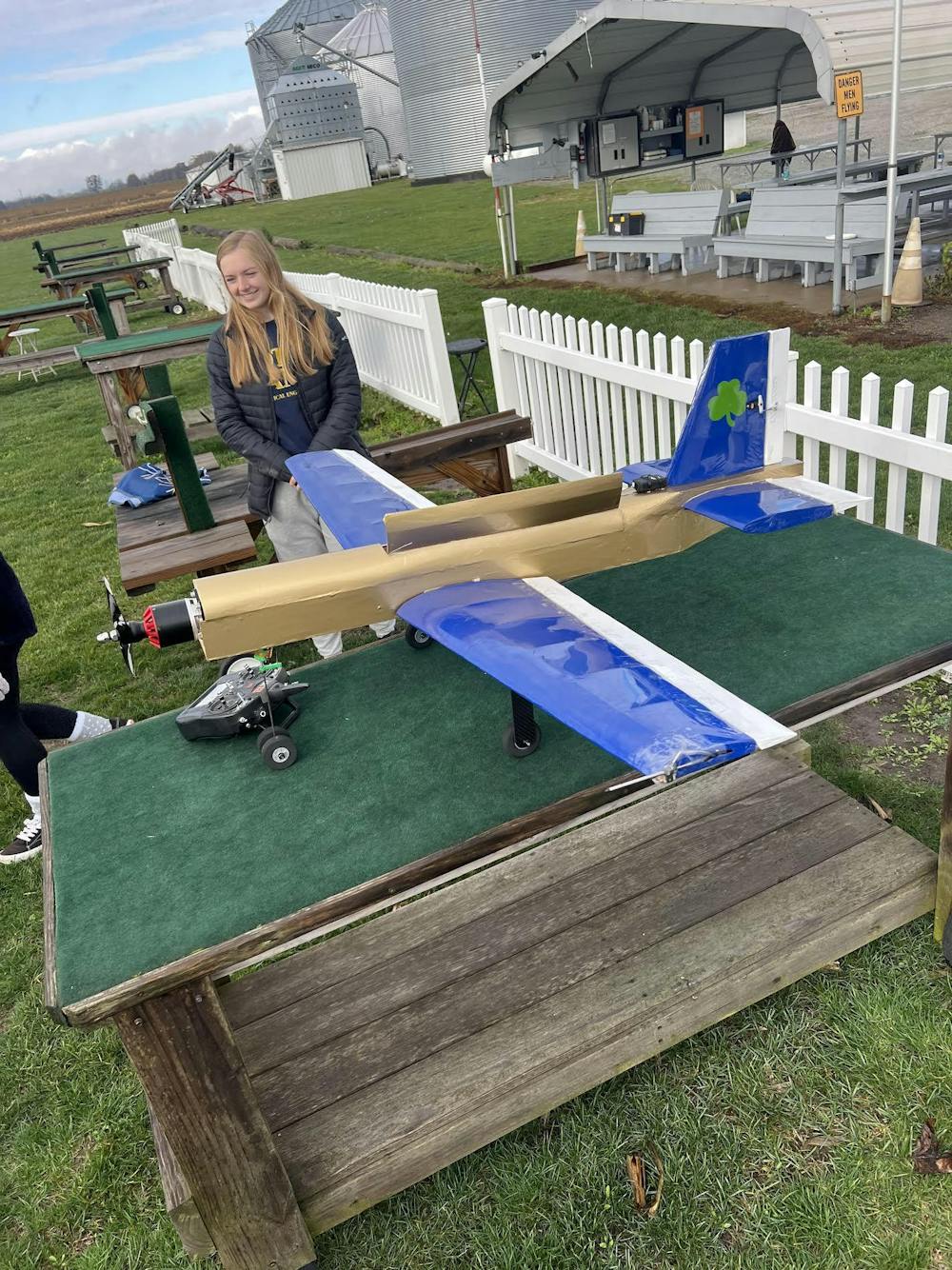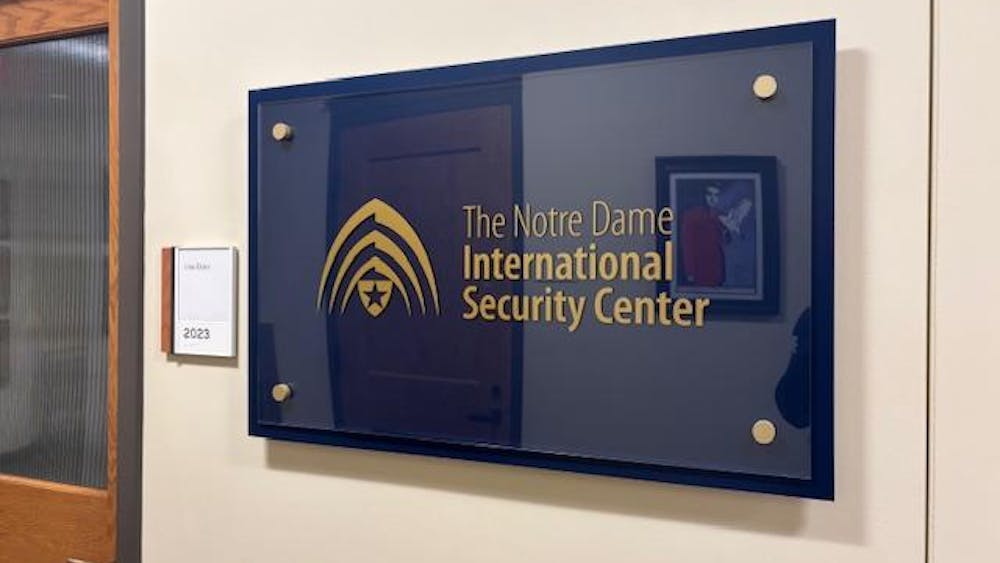Students in the Design, Build, Fly (DBF) club spend the year designing, building and testing a model airplane to fly in a competition against universities from all over the world.
The competition was created by the American Institute for Aeronautics and Astronautics (AIAA), which sends participants a list of missions to complete for the competition. This year’s task is to build a plane that releases a glider and has “fuel tanks” (plastic water bottles) under the wings. The final competition will take place at an airfield in Tucson, Arizona from April 10 through 13.
Before the club begins building the plane, DBF’s chief engineer senior Isabella Field works on a complicated scoring analysis code.
“I take all the information the AIAA gives us and create an optimization code. It factors in the aspect ratio of the plane, how much weight it's carrying, the wing span, the takeoff distance and it spits out a bunch of configurations that would fly … I pick the best configuration to go with,” Field said.
After Field runs the code, the design and build work begins. Because the club consists of around 30 members, everyone is able to participate in the building process.
“The club is open to anyone,” Field said. “When I first joined as a freshman, I knew absolutely nothing about aerodynamics … we're not that big of a club, which is honestly really great, because every single member that comes to a meeting will get to do something very helpful.”
The club is split into different teams, each focusing on a specific aspect of the design. The teams include research and development, payload, structures and aerodynamics. Sophomore Cameron Thompson is the sub-lead of the aerodynamics team.
“On the aero squad this year, we did a lot of stability analysis on the plane. Basically, we make sure it can fly and it's optimized for our mission,” Thompson said.
As project manager, junior Ben Walsh is responsible for keeping the club on schedule and making sure their project will be ready for competition. Once the initial build is complete, the club visits an airfield located roughly twenty minutes from campus. There, they fly their plane for the first time, carefully collecting data and observing any changes that need to be made. The first flight has been rescheduled for weather a few times, but DBF hopes to take flight this Saturday, Nov. 23.
“For the first flight, the goal is to have an aerodynamic concept, where we can say, ‘okay, this is the shape and size of the wings. This is what our tail is going to be. This is the motor we’re using,’” Walsh said.
Once the team completes a successful flight, they will modify the design to incorporate all of the required missions and ensure their plane flies as quickly as possible.
“We build around four or five planes. Usually our first plane is just about getting it in the sky. Once we have that, we say ‘okay, what can we learn from that flight? How can we improve?’ and we take that information and build a second plane,” Field said.
Another important aspect of the competition is a detailed report that competing clubs must submit explaining their design. The report is around 60 pages, and writing a good report gives clubs an advantage at competition.
“The report is very important for scoring because when you get to the competition, the order in which you fly is based on your report score. If you do really well on the report, you get to fly first, which means you can repeat your missions more times to get a better score,” Field said.
Each of the leads and sub-leads travel to competition in April, but the club leadership aims to invite as many freshmen as possible and ensure the club experience lives on. Traveling to the competition as a freshman inspired Thompson to continue DBF.
“[The club] did a really good job at making sure a good amount of freshmen could go. There were four of us out of 14 that got to travel, and it was a really good time. It was cool to see the different designs that other teams came up with,” Thompson said.










